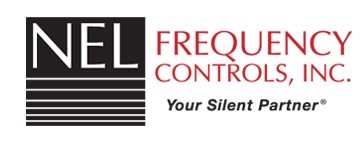Bus Rapid Transit (BRT) Market Status and Trend Analysis 2017-2026
- Report Code : 99S2213573
- Published On: Dec, 2020
- Category : Automotive & Transportation
- Pages : 98
-
Summary
Further key aspects of the report indicate that:
Chapter 1: Research Scope: Product Definition, Type, End-Use & Methodology
Chapter 2: Global Industry Summary
Chapter 3: Market Dynamics
Chapter 4: Global Market Segmentation by region, type and End-Use
Chapter 5: North America Market Segmentation by region, type and End-Use
Chapter 6: Europe Market Segmentation by region, type and End-Use
Chapter 7: Asia-Pacific Market Segmentation by region, type and End-Use
Chapter 8: South America Market Segmentation by region, type and End-Use
Chapter 9: Middle East and Africa Market Segmentation by region, type and End-Use.
Chapter 10: Market Competition by Companies
Chapter 11: Market forecast and environment forecast.
Chapter 12: Industry Summary.
The global Bus Rapid Transit (BRT) market has the potential to grow with xx million USD with growing CAGR in the forecast period from 2021f to 2026f.
Based on the type of product, the global Bus Rapid Transit (BRT) market segmented into
Diesel
Alternate Fuel
EV
Based on the end-use, the global Bus Rapid Transit (BRT) market classified into
urban areas
Others
Based on geography, the global Bus Rapid Transit (BRT) market segmented into
North America [U.S., Canada, Mexico]
Europe [Germany, UK, France, Italy, Rest of Europe]
Asia-Pacific [China, India, Japan, South Korea, Southeast Asia, Australia, Rest of Asia Pacific]
South America [Brazil, Argentina, Rest of Latin America]
Middle East & Africa [GCC, North Africa, South Africa, Rest of Middle East and Africa]
And the major players included in the report are
Volvo
Volkswagen
Yutong
JINLONG
Macropolo
Daimler
Qingnian
Tata
-
With tables and figures helping analyze worldwide Bus Rapid Transit (BRT) market, this research provides key statistics on the state of the industry and is a valuable source of guidance and direction for companies and individuals interested in the market.
1 RESEARCH SCOPE1.1 Research Product Definition
1.2 Research Segmentation
1.2.1 Product Type
1.2.2 Main product Type of Major Players1.3 Demand Overview
1.4 Research Methodology
2 GLOBAL BUS RAPID TRANSIT (BRT) INDUSTRY2.1 Summary about Bus Rapid Transit (BRT) Industry
2.2 Bus Rapid Transit (BRT) Market Trends
2.2.1 Bus Rapid Transit (BRT) Production & Consumption Trends
2.2.2 Bus Rapid Transit (BRT) Demand Structure Trends2.3 Bus Rapid Transit (BRT) Cost & Price
3 MARKET DYNAMICS3.1 Manufacturing & Purchasing Behavior in 2020
3.2 Market Development under the Impact of COVID-19
3.2.1 Drivers
3.2.2 Restraints
3.2.3 Opportunity
3.2.4 Risk
4 GLOBAL MARKET SEGMENTATION4.1 Region Segmentation (2017 to 2021f)
4.1.1 North America (U.S., Canada and Mexico)
4.1.2 Europe (Germany, UK, France, Italy, Rest of Europe)
4.1.3 Asia-Pacific (China, India, Japan, South Korea, Southeast Asia, Australia, Rest of Asia Pacific)
4.1.4 South America (Brazil,, Argentina, Rest of Latin America)
4.1.5 Middle East and Africa (GCC, North Africa, South Africa, Rest of Middle East and Africa)4.2 Product Type Segmentation (2017 to 2021f)
4.2.1 Diesel
4.2.2 Alternate Fuel
4.2.3 EV4.3 Consumption Segmentation (2017 to 2021f)
4.3.1 urban areas
4.3.2 Others
5 NORTH AMERICA MARKET SEGMENT5.1 Region Segmentation (2017 to 2021f)
5.1.1 U.S.
5.1.2 Canada
5.1.3 Mexico5.2 Product Type Segmentation (2017 to 2021f)
5.2.1 Diesel
5.2.2 Alternate Fuel
5.2.3 EV5.3 Consumption Segmentation (2017 to 2021f)
5.3.1 urban areas
5.3.2 Others5.4 Impact of COVID-19 in North America
6 EUROPE MARKET SEGMENTATION6.1 Region Segmentation (2017 to 2021f)
6.1.1 Germany
6.1.2 UK
6.1.3 France
6.1.4 Italy
6.1.5 Rest of Europe6.2 Product Type Segmentation (2017 to 2021f)
6.2.1 Diesel
6.2.2 Alternate Fuel
6.2.3 EV6.3 Consumption Segmentation (2017 to 2021f)
6.3.1 urban areas
6.3.2 Others6.4 Impact of COVID-19 in Europe
7 ASIA-PACIFIC MARKET SEGMENTATION7.1 Region Segmentation (2017 to 2021f)
7.1.1 China
7.1.2 India
7.1.3 Japan
7.1.4 South Korea
7.1.5 Southeast Asia
7.1.6 Australia
7.1.7 Rest of Asia Pacific7.2 Product Type Segmentation (2017 to 2021f)
7.2.1 Diesel
7.2.2 Alternate Fuel
7.2.3 EV7.3 Consumption Segmentation (2017 to 2021f)
7.3.1 urban areas
7.3.2 Others7.4 Impact of COVID-19 in Europe
8 SOUTH AMERICA MARKET SEGMENTATION8.1 Region Segmentation (2017 to 2021f)
8.1.1 Brazil
8.1.2 Argentina
8.1.3 Rest of Latin America8.2 Product Type Segmentation (2017 to 2021f)
8.2.1 Diesel
8.2.2 Alternate Fuel
8.2.3 EV8.3 Consumption Segmentation (2017 to 2021f)
8.3.1 urban areas
8.3.2 Others8.4 Impact of COVID-19 in Europe
9 MIDDLE EAST AND AFRICA MARKET SEGMENTATION9.1 Region Segmentation (2017 to 2021f)
9.1.1 GCC
9.1.2 North Africa
9.1.3 South Africa
9.1.4 Rest of Middle East and Africa9.2 Product Type Segmentation (2017 to 2021f)
9.2.1 Diesel
9.2.2 Alternate Fuel
9.2.3 EV9.3 Consumption Segmentation (2017 to 2021f)
9.3.1 urban areas
9.3.2 Others9.4 Impact of COVID-19 in Europe
10 COMPETITION OF MAJOR PLAYERS10.1 Brief Introduction of Major Players
10.1.1 Volvo
10.1.2 Volkswagen
10.1.3 Yutong
10.1.4 JINLONG
10.1.5 Macropolo
10.1.6 Daimler
10.1.7 Qingnian
10.1.8 Tata10.2 Bus Rapid Transit (BRT) Sales Date of Major Players (2017-2020e)
10.2.1 Volvo
10.2.2 Volkswagen
10.2.3 Yutong
10.2.4 JINLONG
10.2.5 Macropolo
10.2.6 Daimler
10.2.7 Qingnian
10.2.8 Tata10.3 Market Distribution of Major Players
10.4 Global Competition Segmentation
11 MARKET FORECAST11.1 Forecast by Region
11.2 Forecast by Demand
11.3 Environment Forecast
11.3.1 Impact of COVID-19
11.3.2 Geopolitics Overview
11.3.3 Economic Overview of Major Countries
12 REPORT SUMMARY STATEMENT
-
The Bus Rapid Transit (BRT) Market has been segregated into various crucial divisions including applications, types, and regions. Each market segment is intensively studied in the report contemplating its market acceptance, worthiness, demand, and growth prospects. The segmentation analysis will help the client to customize their marketing approach to have a better command of each segment and to identify the most prospective customer base.
Report Objectives / Segmentation Covered :
By Companies / players:
By Regions:
By Type:
By Application:
Frequently asked questions(FAQ's):
As manufacturers prepare to scale up, Bus Rapid Transit (BRT) companies must be clear and transparent about the impact of such volatility on the balance sheet.
Depending upon the type of applications, the Bus Rapid Transit (BRT) Market has been segmented into
The Bus Rapid Transit (BRT) Market is expected to grow at a moderate CAGR during the forecast period of 2025 to 2030.
Yes, the add-on segmentation is available in the premium customised version of the Bus Rapid Transit (BRT) Market report for a more in-depth analysis. It aids in the calculation of refined and precise market values.
The Bus Rapid Transit (BRT) study focuses on shifting market dynamics, geopolitical and regulatory regulations, and key players' strategies to carefully analyze demand at risk across multiple industry categories.















